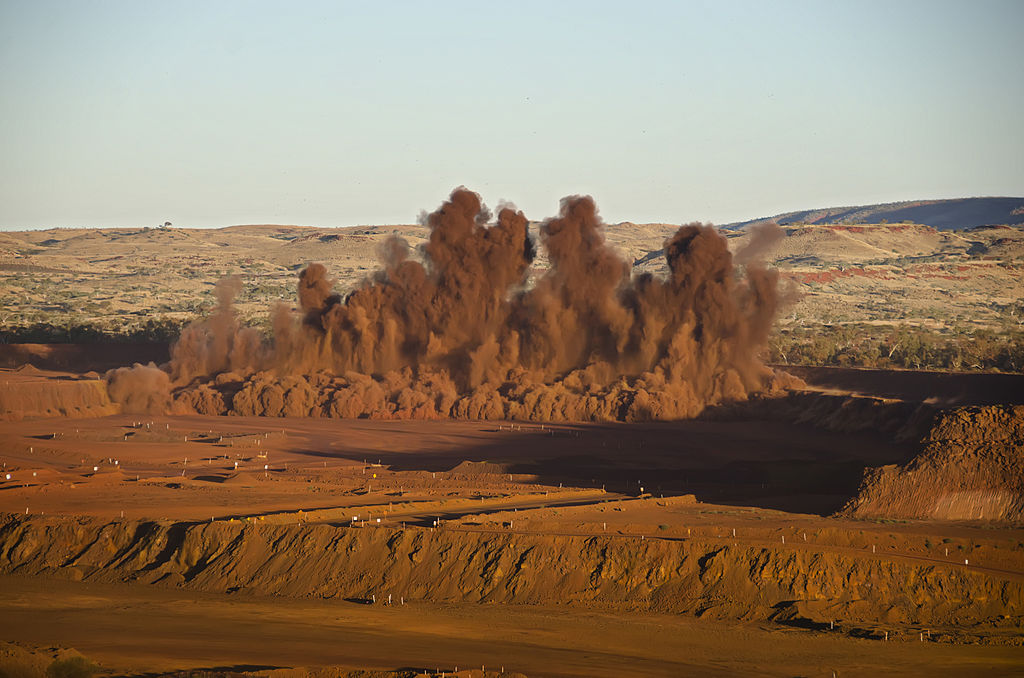
China’s demand for Australia’s iron ore is the gift which keeps on giving. It took off in the second half of 2005 and has helped to deliver the Australian economy an amazing $1.2 trillion since then.
After 18 years, the long boom in iron ore prices is still yielding about $32 billion in export revenue every three months according to the Department of Industry.
While governments in the United States and Europe wrestle with how to stop Chinese competition undermining their manufacturing industries, Australia has been enjoying a seemingly endless bonanza. It is a difference that cannot fail to inform our foreign policy towards China.
The iron ore market price last week reached its highest point since March, surpassing US$130 a tonne. Some analysts expect it to rise further as the Chinese government endeavours to lift growth with stimulus measures.
The Australian miners’ cash costs are about $20 a tonne so the profits, federal company tax revenue and state royalties have been enormous. The super profits are effectively a transfer of wealth from China to Australia.
Department of Industry data on the volume and value of Australia’s iron ore exports show the average received price rose above $50 a tonne in the September quarter of 2005, which was more than double the long-term average. It has never dropped below $50 over a quarter since.
Over almost two decades, it has averaged $102 a tonne, rising to an average of $155 over the last three years. The actual spot prices (quoted in US dollars) in traded markets are a lot more volatile, but quarterly receipts provide a comparison with costs and guide to tax payments.
The Australian Tax Office’s latest corporate tax transparency report, released earlier this month, shows the resources sector delivered half all company tax revenue in 2020-21. In 2017-18 the resource sector was paying $16 billion in company tax revenue. Four years later, the resource sector’s company tax payments had risen three-fold to $42 billion.
West Australia’s iron ore royalties have captured an average of $10 billion a year over the last three years and have pumped $66 billion into the state over the last decade, according to state budget documents.
Since 2005, Australia’s total iron ore export income has risen from $8 billion a year to $124 billion, while the volume shipped has risen from 230 million tonnes to just under 900 million tonnes.
China and Australia are bound together on iron ore in a mutual dependency. China takes 85% of Australia’s iron ore exports, and Australia accounts for 61% of China’s iron ore imports. Australia’s iron ore exports to China are three times the size of those from next-ranked Brazil. The Chinese price for Australian iron ore sets the world market.
Iron ore was notably exempted from the Chinese government’s three-year campaign of economic coercion against Australia because the Chinese steel industry cannot do without it.
China does not like being so bound to Australia and does not like handing super profits to the big iron ore companies: BHP, Rio Tinto, Fortescue and Hancock Mining. However, since 2010, when BHP and Rio Tinto effectively forced the Chinese steel mills to abandon the annual contract price fixing negotiations over which the Chinese state tried vainly to exercise some control, the mills have had to pay the price set by the market.
The market price stays high mostly because China’s steel industry depends on its own domestic iron ore mines for about 20% of their supplies. They are high-cost operations and high prices are required to keep them in business. In a competitive commodity market, prices for everyone are set by the highest cost marginal producer.
China’s central economic body, the National Development and Reform Commission, is blaming ‘speculation’ and ‘hoarding’ of iron ore stocks for the latest price surge and is promising tighter supervision of futures markets, however such measures are unlikely to have any more effect now than they have in the past.
Beijing’s efforts to reduce dependence on Australia include supporting the expansion of its domestic iron ore mining, increasing its use of scrap steel and investments in Africa. These efforts have been underway for the past decade during which its dependence on Australia has actually increased.
The Simandou project in Guinea is the most significant new iron ore development globally. It faces formidable technical, logistical and political challenges, but the project is moving ahead. For political reasons, the rail route must be open to general rail traffic through central Ghana. Shipping more than 1 million tonnes of iron ore a week along a rail line used for passengers and general cargo will be a logistical nightmare.
More non-Australian supply will emerge over coming years but any significant fall in the iron ore price is more likely to result from weaker Chinese demand. Many expected that the downturn in its housing sector, which has historically been the source of about 40% of China’s steel usage, would bring the miners’ super-profits to an end. However, there has been enough growth in industrial and infrastructure activity to offset the weakness in residential construction, even in the absence of the massive stimulus programs used to fight past downturns.
The China-powered iron ore markets are contributing to Australia’s unexpected federal budget surpluses. Australia’s Treasury has, in each of its last 10 budgets, predicted that iron ore prices would drop back from market prices usually well above US$100 a tonne to US$55 or (in its latest budget) $US60. Every US$10 in the iron ore price that Treasury gets wrong translates to a A$500 million error in its annual budget balance.
Treasury will eventually be right, but in the meantime Australian living standards will continue to be supported by China’s need for our iron ore.

